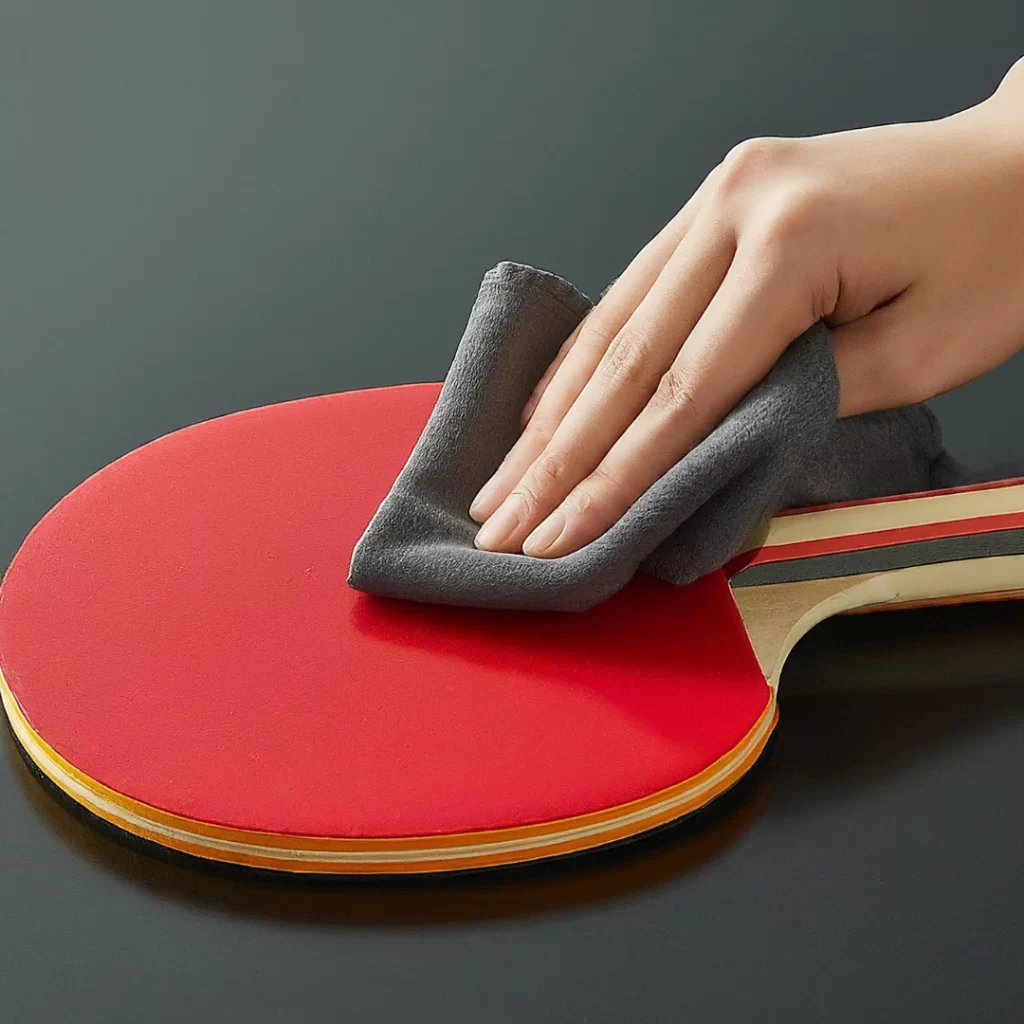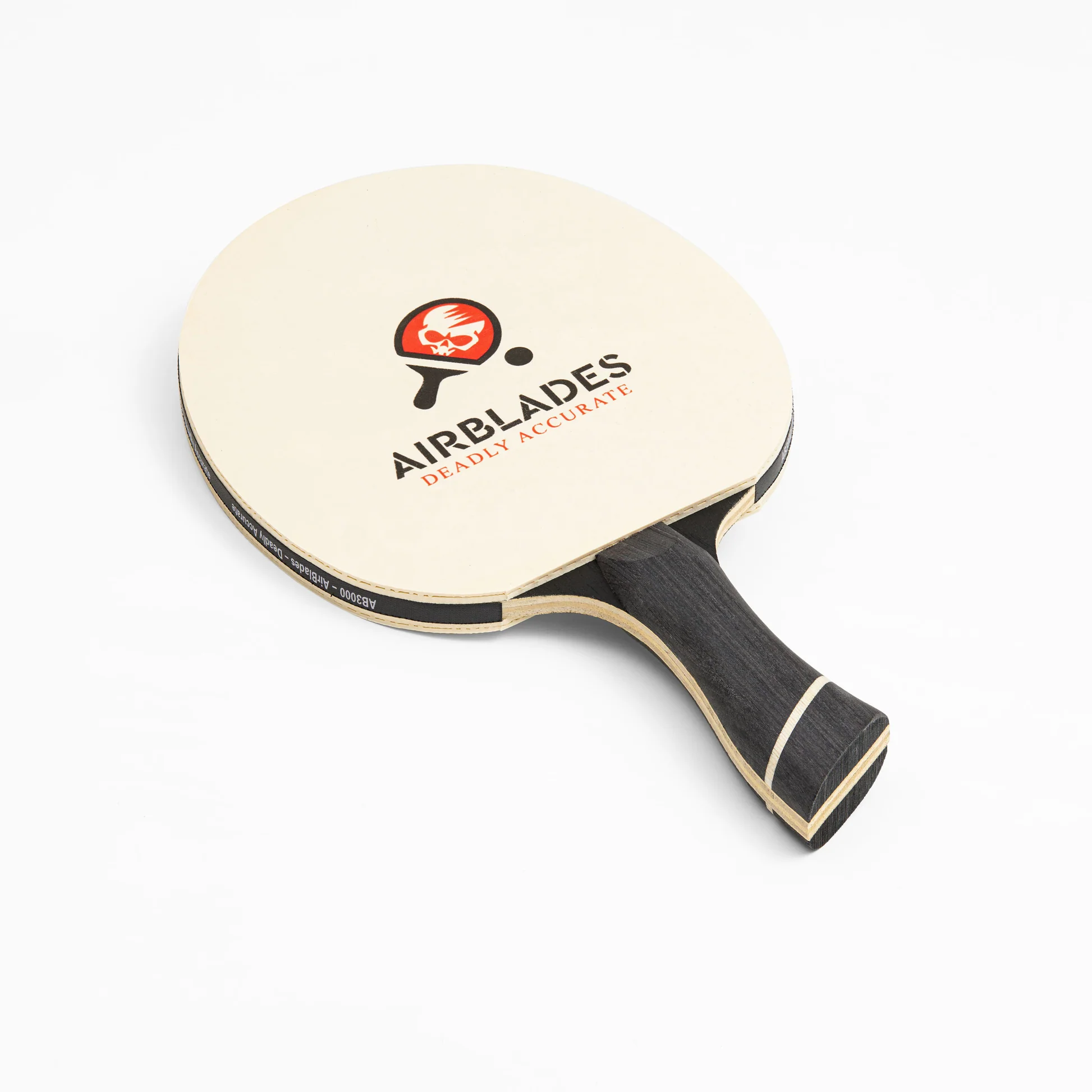For many, ping pong (also known as table tennis) is a fun and social activity. But for serious players, it’s a fast-paced sport that demands precision and control. A key element in achieving this mastery is your trusty ping pong paddle. Just like any other sports equipment, paddles require proper care to maintain optimal performance. So, how do you ensure your paddle delivers its best game after game?
The answer lies in a simple yet effective cleaning routine. Here’s a comprehensive guide on keeping your ping pong paddle in pristine condition, allowing you to focus on serving up aces and mastering those tricky backhands.
Why Cleaning Your Paddle Matters
Before diving into the cleaning process, let’s understand why it’s crucial. The rubber surface of your paddle is responsible for generating spin and grip, essential for accurate shots. However, with regular use, the rubber accumulates dust, dirt, and even sweat residue. This buildup can significantly impact your game in two ways:
- Reduced Grip: Dust and grime act as a barrier, making it harder for the rubber to grip the ball effectively. This translates to less spin and control over your shots.
- Degraded Rubber: Sweat contains salt, which can break down the rubber over time, causing it to lose its elasticity and responsiveness. This not only affects your game but also shortens the lifespan of your paddle.
By cleaning your paddle regularly, you remove these unwanted elements, restoring its grip and ensuring the rubber performs at its peak.

Gathering Your Cleaning Arsenal
Now that you understand the importance of cleaning, let’s gather the tools you’ll need:
- Soft Sponge: A clean, soft sponge is ideal for wiping the rubber surface gently. Avoid using abrasive sponges that can scratch the delicate rubber.
- Lukewarm Water: Hot water can damage the rubber, so stick to lukewarm water for optimal cleaning.
- Mild Dish Soap (Optional): For stubborn dirt or grime, a mild dish soap diluted in water can be used. Harsh detergents or solvents are a big no-no!
- Clean, Dry Cloth: A microfiber cloth is perfect for drying the paddle without leaving any lint behind.
Optional Items:
- Table Tennis Paddle Cleaner: For a more dedicated cleaning approach, consider purchasing a specialized table tennis paddle cleaner. These typically come as a spray or a solution specifically formulated for cleaning ping pong paddles.
- Ping Pong Paddle Case: Storing your paddle in a case after cleaning protects it from dust and damage when not in use.

The Cleaning Process: A Step-by-Step Guide
With your cleaning arsenal assembled, here’s a step-by-step guide on how to effectively clean your ping pong paddle:
-
Brush Off Loose Dirt: Before any wet cleaning, use a dry brush or a soft cloth to remove any loose dust or debris that might be present on the paddle’s surface, especially the rubber.
-
Dampen the Sponge: Wring out a clean sponge so it’s slightly damp, not soaking wet. Remember, excess water can damage the paddle’s wood.
-
Clean the Rubber Surface: Gently wipe the rubber surface of the paddle with the damp sponge using circular motions. Work your way from the handle outwards, ensuring you cover the entire playing area.
-
Tackling Tough Stains (Optional): If you encounter stubborn dirt or grime, here’s where the mild dish soap comes in. Dilute a few drops of dish soap in a separate bowl of lukewarm water. Dip a corner of the sponge in this solution and gently clean the affected area. Rinse the soapy section of the sponge frequently in clean water to prevent soap residue buildup on the rubber.
-
Rinse and Dry: Rinse the entire paddle with clean water to remove any remaining soap residue. Finally, use the clean, dry cloth to thoroughly pat the paddle dry. Pay close attention to the edges and the area around the handle, as these areas tend to retain moisture.
-
Air Drying (Optional): For an extra layer of drying, you can leave the paddle in a well-ventilated area for some time to ensure it’s completely dry before storing it.
Additional Tips:
- Clean Regularly: Aim to clean your paddle after each playing session, especially if you sweat a lot during gameplay.
- Avoid Harsh Chemicals: Never use harsh chemicals, solvents, or abrasive cleaners on your paddle. These can damage the rubber and shorten its lifespan.
- Store Properly: Once clean and dry, store your paddle in a cool, dry place away from direct sunlight. Using a ping pong paddle case provides added protection.
- Replace When Needed: Even with proper cleaning, ping pong paddles don’t last forever. The rubber loses its grip and responsiveness over time. If you notice a significant decrease in performance, despite cleaning, it might be time to invest in a new paddle.

Beyond Cleaning: Maintaining Optimal Performance
While cleaning is crucial, it’s not the only factor affecting your paddle’s performance. Here are some additional tips to keep your ping pong paddle in top shape:
-
Protect the Edges: The edges of the paddle are particularly vulnerable to damage from knocks and bumps. Consider using edge tape specifically designed for ping pong paddles to offer added protection.
-
Rubber Care: Some manufacturers recommend using specialized rubber care products designed to optimize grip and performance. However, these are generally not essential for casual players.
-
Practice Proper Technique: While a clean paddle is important, mastering proper playing technique is equally crucial for optimal performance. Focus on developing a strong grip, efficient strokes, and proper footwork to elevate your game.
Once the paddle is completely dry, store it in a protective case or cover
Here’s how to clean your ping pong paddle for optimal performance:
Cleaning Supplies:
- Soft sponge
- Dish soap (mild, liquid)
- Warm water
- Clean, dry towel
Steps:
- Dust it off: Gently wipe away any surface dust and grime with the dry towel.
- Dampen the sponge: Wet the sponge with warm water, wringing it out thoroughly so it’s damp, not soaking.
- Clean the rubber: Wipe the rubber surface of the paddle with the damp sponge, using gentle, circular motions. Work your way from the handle outwards.
- Tackle tough stains (optional): If there are stubborn stains, add a tiny amount of mild dish soap to the damp sponge. Clean the stained area and then wipe the entire paddle surface again with clean, soapy water.
- Rinse and dry: Rinse any soap residue by wiping the paddle with a clean, damp cloth.
- Air dry completely: Let the paddle air dry completely out of direct sunlight before storing it. This can take a few hours.
Storing your paddle:
Once your paddle is completely dry, it’s crucial to store it properly to protect the rubber. Here are some tips:
- Use a case or cover: Keep your paddle in a protective case or cover to shield it from dust, dirt, and damage.
- Avoid extreme temperatures: Don’t leave your paddle in hot cars or cold environments, as this can degrade the rubber.
- Store it flat: Ideally, store your paddle flat on a stable surface.
By following these cleaning and storage practices, you’ll maintain your ping pong paddle’s optimal grip and performance for longer.

By incorporating a regular cleaning routine and following these simple maintenance practices, you can ensure your ping pong paddle remains in top condition. This translates to better control, improved spin, and ultimately, a more enjoyable and successful game. Remember, a clean and well-maintained paddle is an extension of your skill, allowing you to unleash your inner champion on the table tennis court. So, grab your cleaning supplies, follow these steps, and get ready to dominate the competition!



